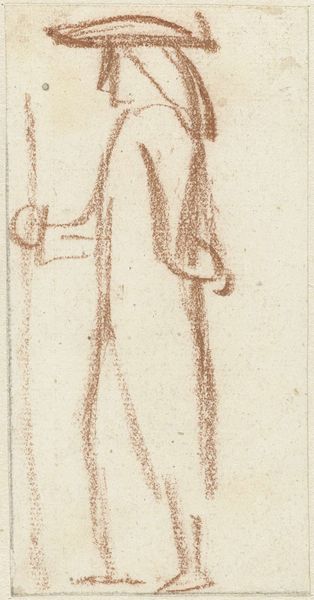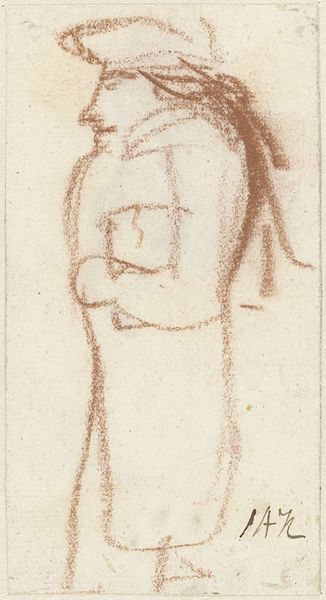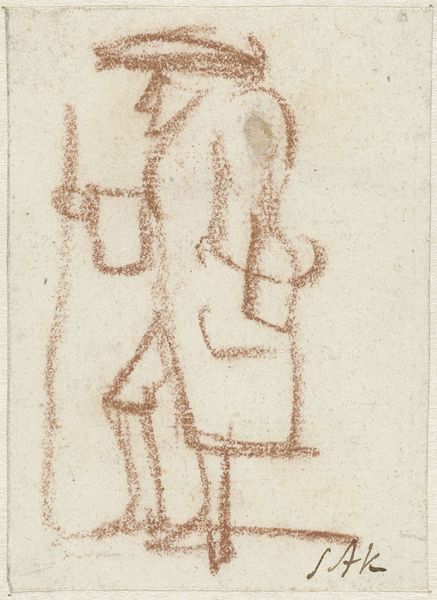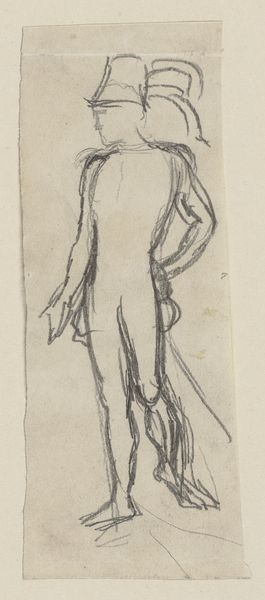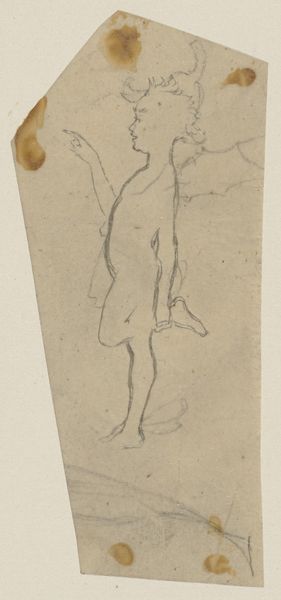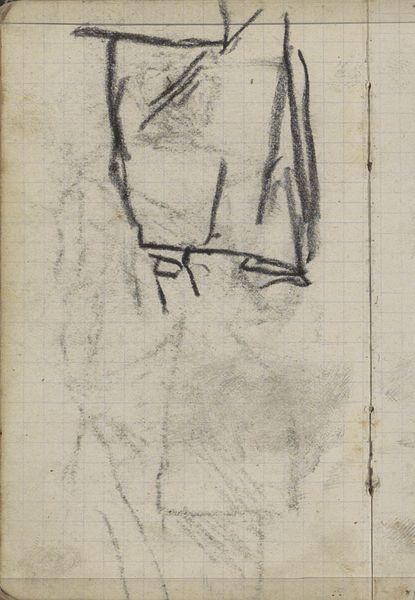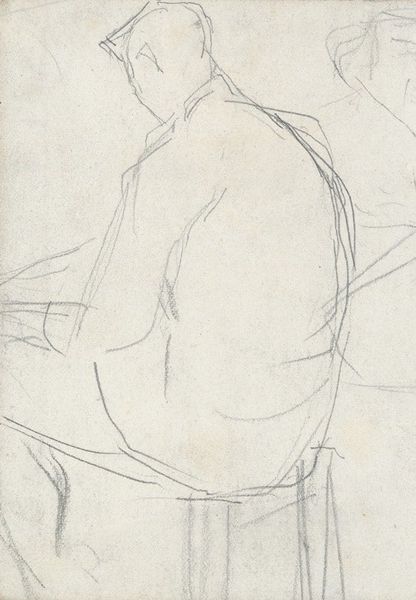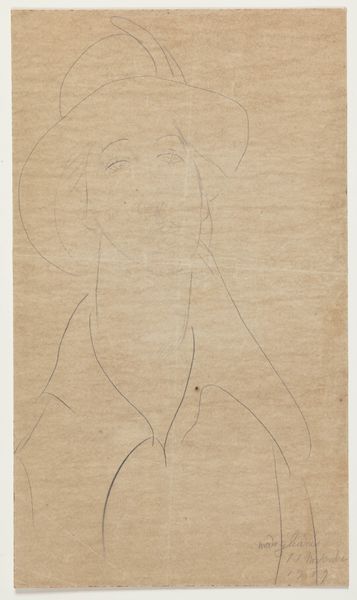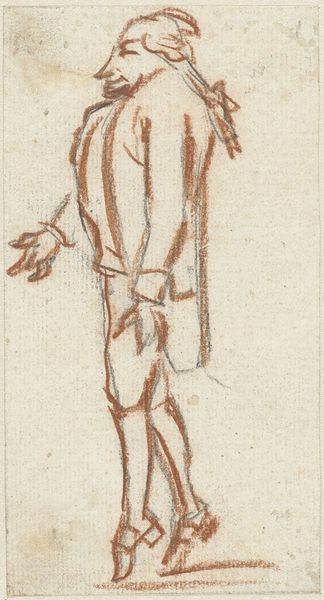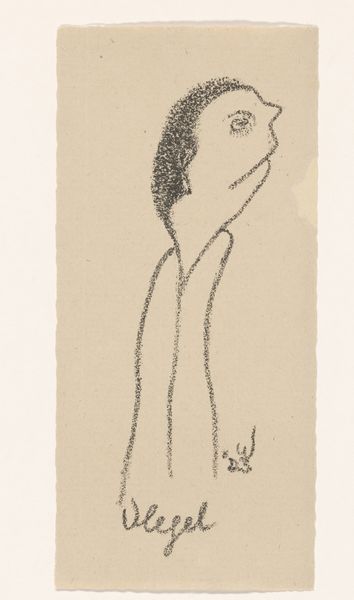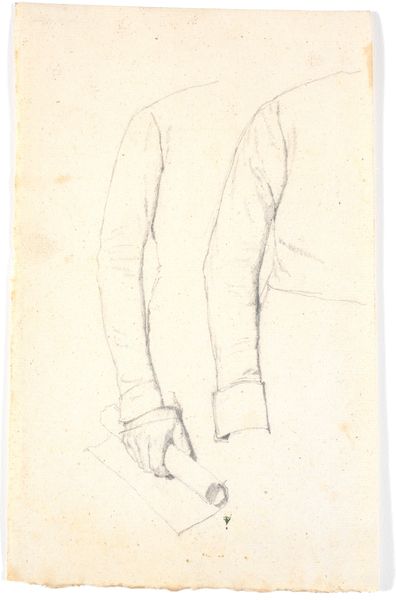
drawing, pastel
#
portrait
#
drawing
#
figuration
#
romanticism
#
pastel
Dimensions: height 86 mm, width 40 mm
Copyright: Rijks Museum: Open Domain
Curator: Here we have “Lopende man, naar links, van opzij gezien,” or "Walking Man, facing left, seen from the side," by Simon Andreas Krausz, created between 1770 and 1825, a pastel drawing. What strikes you about it? Editor: Initially, I’m drawn to the sketch-like quality. It feels very immediate, as if we’ve caught the artist capturing a fleeting observation. Curator: I find that immediacy compelling as well. Consider the socio-political context; the late 18th and early 19th centuries saw enormous upheaval, the French Revolution, the rise and fall of Napoleon. The very notion of ‘man’ was being challenged and redefined in revolutionary terms. This almost gestural capture feels relevant to this moment in European history. Editor: Yes, it lacks the grandiosity of the Neoclassical, perhaps because it captures movement itself. The looseness speaks to something more grounded, something personal perhaps, reflecting an era grappling with shifting ideals of personhood and identity beyond mere representation. Curator: Precisely. And Krausz worked during a period when art academies and institutions were solidifying power dynamics within the art world. However, here we have this wonderfully vulnerable and transient piece. It's in stark contrast to the idealized portraits commissioned to serve specific social and political purposes. What of the medium? Pastel can lend a delicacy or boldness, right? Editor: Absolutely. In this case, the use of pastel lends a fragile quality, appropriate considering the theme. It accentuates the precarious nature of existence and the era itself. Curator: How does it resonate, given our current socio-political climate? Editor: I feel an undeniable sense of shared struggle and journey— a poignant echo through time. His path is, in essence, a path we’re all on together, grappling with social change, personal transformation. Curator: I find myself contemplating how our institutional frameworks continue to mold our perception of figures walking into and out of the picture plane—the public eye and the historical canon. This man's anonymous march serves as a quiet, defiant counterpoint. Editor: It's fascinating how a seemingly simple sketch can open up layers of thought. Curator: It’s pieces like these that invite us to constantly re-evaluate our understanding of art and its connection to history and contemporary experience.
Comments
No comments
Be the first to comment and join the conversation on the ultimate creative platform.
